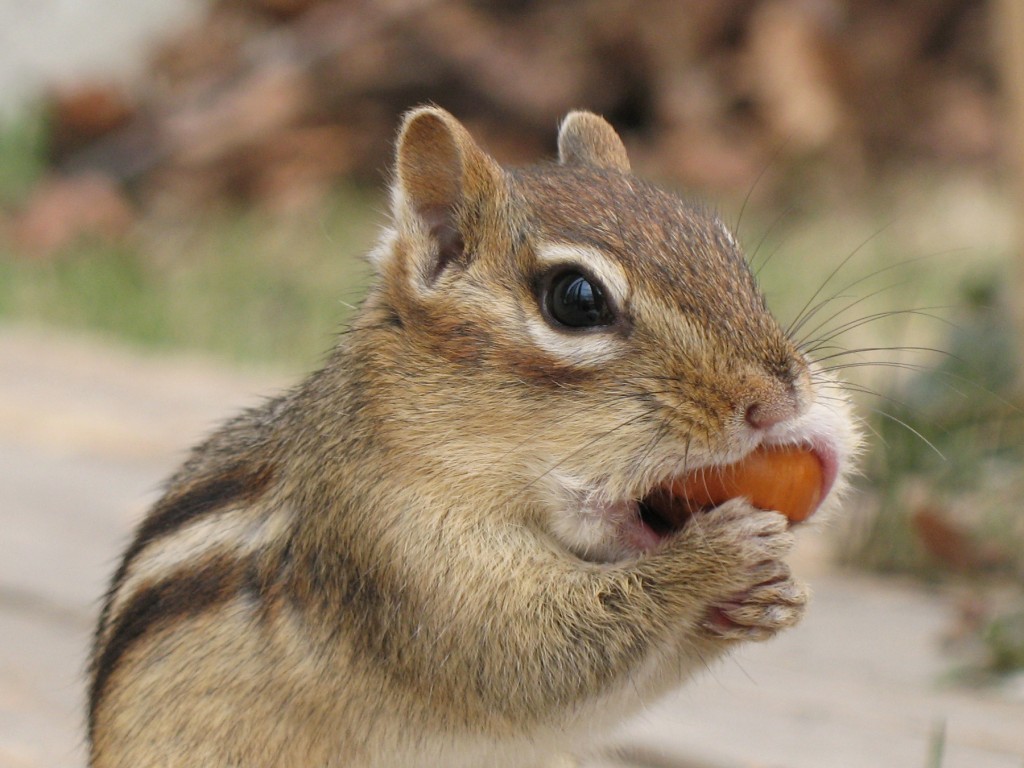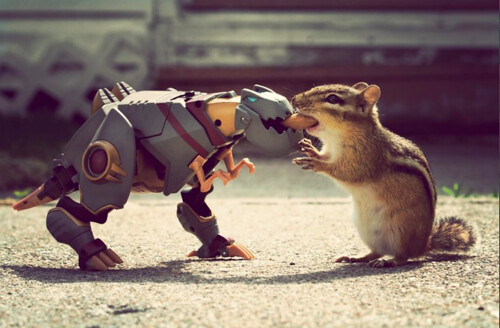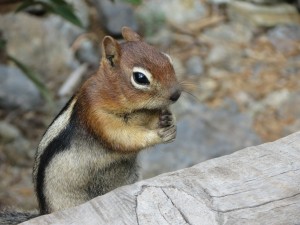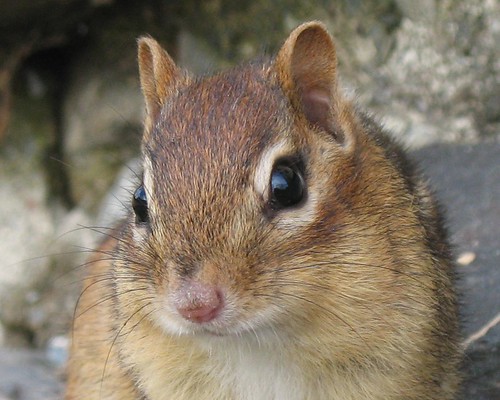Do you like food? What if you find out all your restaurants, cafes and grocery stores will close down for 6 months?
This is what many chipmunks must face when the winter months are approaching, and soon no new food would be available until the spring. Through the summer and fall, many chipmunks busily collect nuts, seeds and other food items and bury them in underground caches to later revisit during the winter.

You might imagine a chipmunk stockpiling their favorite nuts in a single cache, which is basically “putting all their eggs in one basket” and viciously defending it (larder-hoarders). There is a second type of hoarder – those who spread out its collection in hundreds to thousands of small caches (scatter-hoarders).
I’ve chosen as our main character today the yellow-pine chipmunk, a scatter hoarder. How strategic are the yellow-pine chipmunks in how they store and recover their food stores? Let’s follow one through these hypothetical scenarios:
============
Scenario 1: I found a pine seed!
Into the cheek pouch and into the cache! Chipmunks are incredibly industrious – an individual yellow-pine chipmunk may collect up to 68,000 items for a single winter, and bury them in thousands of separate caches. Of course, they would look incredibly cute doing this (I saw a squirrel bury an acorn a few weeks ago, and it was one of the most adorable scenes of a squirrel).

Scenario 2: I found another pine seed.
Again, time to cache! However, for scatter hoarders, it may be key where they cache each food item. Researchers have studied how far chipmunks will go from the source of the food before they bury the food item (for efficiency), and also how much distance there is between caches (to reduce risk of losing caches to competitors finding multiple caches in the same area).
Scenario 3: Another chipmunk is watching. It may steal my food.

May have to adjust the caching. Knowing a competitor is in the vicinity can affect the caching behavior for many animals in terms of the frequency of caching, location of caching, or whether they cache at all. Gray squirrels and some crows will create “false” caches by burying stones or digging up and covering an empty cache as a means of deception for its competitors (though there are no studies showing whether yellow-pine chipmunks do this as well).
Scenario 4: I found a better spot to hide my seeds!
Is it worth moving? Chipmunks may revisit its caches to dig up and move the seeds to a new location farther away, so that it is even harder for other competitors to find it.
Scenario 5: I found a seed, but it’s small and looks like it’s going to sprout soon.
Eat it now. Not all food items are cached — sometimes a chipmunk would just eat the food on the spot. Researchers propose possible reasons for why a chipmunk may choose to eat or store the food item, such as the abundance of the food item, whether the food item stores well and maintains its nutritional value in the long term, or the time required to eat it. For example, a large acorn with a hard shell may take longer to eat than to carry it to a cache, so it may be more efficient to store until later.
Scenario 6: I’m hungry, but winter is here and there are no seeds on the ground.
Time to dig up the caches — this is what the hoarding was for! A yellow-pine chipmunk essentially “hibernates” during the winter but would wake up every 5-7 days to relocate their caches to eat and resupply their metabolism.

Scenario 7: I found some seeds, but I don’t think it’s the one I buried.
Score! Don’t care who buried it, more food is good. The yellow-pine chipmunks compete for food with other animals including fellow chipmunks and Steller’s jays. The same way the chipmunk’s cache may be stolen from by another animal, the chipmunk can use its smell or random searching to locate another animal’s cache.
Scenario 8: I forgot where I hid the rest of my seeds.

If hungry, sniff; if full, oh well. If memory fails, the chipmunk can sometimes sniff out food, or by chance locate its own or others’ buried food, especially when there is moisture. Also, any seeds left behind uneaten will be quite happy as they will germinate in the spring and help regenerate the forest in the spring.
The chipmunk won’t recover everything it buried (roughly 56-76%, based on a 2006 study). The remainder may be key to allowing the seed-bearing trees to survive and grow more food for the chipmunks next year.
============
For a larder-hoarding Eastern chipmunk, there is comfort in having all the food in once place, but “almost 50% of hard-earned hoards are stolen by other animals including other chipmunks,” according to BBC One (See a young Eastern chipmunk learn this very fast in BBC One’s Hidden Kingdom Series: Secret Forests. The full episode is now on Netflix).
Given that level of competition, scattering the food stores seems a smart alternative – it reduces the risk of one competitor being able to steal the entire cache, and reduces the effort required to defend the cache. The challenge, then, is to strategically spread out the caches and to relocate them again.
If you were a chipmunk preparing for winter, larder-hoarding or scatter-hoarding – which strategy would you choose?

Thanks to the Beaty Biodiversity Museum for introducing me to the concepts of winter caching, larder hoarding, and scatter hoarding. This article applied those concepts to the yellow-pine chipmunk, but at the museum, you can learn about what winter caching is like for squirrels, foxes, and bears.
